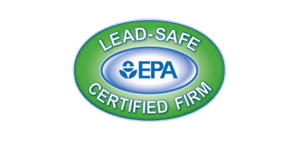Dealing with mold in your home can be a stressful and overwhelming experience. Understanding the timeline of the mold remediation process can help alleviate some of that stress. The duration of mold remediation can vary depending on several factors, from the size of the affected area to the severity of the damage, but knowing what to expect can help you make informed decisions.
In this article, we will explore the timeline for mold remediation in your home. From assessing the extent of the damage to rebuilding and restoration, we’ll cover each step of the process. We’ll also discuss the factors that can influence the timeline for mold remediation and provide some key takeaways to keep in mind.
Key Takeaways
- Mold remediation involves removing mold growth and preventing it from spreading further
- The timeline for mold remediation can vary depending on several factors
- The process includes assessing the extent of mold damage, developing a remediation plan, physical removal of mold, addressing the source of moisture, and cleaning and sanitizing the affected area
- Post-remediation testing and monitoring are conducted to ensure the mold has been effectively removed
- Rebuilding and restoration can begin once the area is confirmed to be mold-free
What is Mold Remediation?
Mold remediation is the process of removing mold growth from your home and preventing its spread. It’s a critical step in creating a safe and healthy living environment for you and your loved ones, and it involves several steps that must be followed carefully to ensure its effectiveness.
The first step in mold remediation involves identifying the source of moisture, which is essential in preventing mold from recurring. Once the source is identified and fixed, the next step is physically removing the mold from your home using specialized equipment and cleaning agents.
It’s essential to implement measures to prevent the spread of mold spores during the removal process, such as setting up containment measures and utilizing negative air pressure. After removing the mold, the affected area should be thoroughly cleaned and sanitized with professional-grade antimicrobial solutions to prevent future mold growth.
Assessing the Extent of Mold Damage
The first step in the mold remediation process is to assess the extent of the mold damage in your home. This requires a thorough inspection from a professional mold inspector. The inspector will examine the affected area and determine the size and scope of the damage. They will also identify the type of mold present to determine the appropriate remediation measures.
In addition, the mold inspector will evaluate the potential health hazards associated with the mold growth. Some molds can cause respiratory problems, skin irritation, and other health issues, so it’s important to identify and eliminate them as quickly as possible.
| What the inspector assesses | What the assessment reveals |
|---|---|
| The severity of the mold damage | How much of your home is affected and to what degree |
| The type of mold present | Whether the mold is toxic or allergenic |
| The source of moisture | What’s causing the mold growth and how to prevent it from recurring |
| The potential health risks associated with the mold | Whether the mold is harmful to humans and how to mitigate the risks |
Assessing the extent of mold damage is critical to developing an effective mold remediation plan. By knowing the size and scope of the problem, you can take the appropriate measures to eliminate the mold from your home and prevent it from returning.
Developing a Mold Remediation Plan
After the assessment of mold damage in your home, the next step is to develop a mold remediation plan. This plan is a detailed document outlining the specific steps that will be taken to safely and effectively remove the mold from your home.
The mold remediation plan includes:
- Containment measures to prevent the spread of mold spores
- Personal protective equipment required for the remediation workers
- Cleaning methods to be utilized
It is important to create a comprehensive plan that addresses all necessary steps to ensure successful mold removal. Take the time to review the plan carefully and ask any questions before the work begins.
When developing a mold remediation plan, it is important to work with experienced professionals who have the necessary training and equipment for proper mold removal. A well-planned and executed remediation plan can help ensure a safe and mold-free environment in your home.
Setting Up Containment Measures
After developing a mold remediation plan, it’s time to put containment measures in place to prevent the spread of mold spores. This is a crucial step in the process of mold removal and involves sealing off the affected area with plastic sheeting and utilizing negative air pressure machines to ensure that air flows into the containment area. These measures prevent cross-contamination and help to create a safer environment for the remediation team and household members.
Containment measures can also involve using HEPA filters to capture mold spores and prevent them from spreading outside of the containment area. It’s important to note that the remediation team will wear personal protective equipment (PPE) during this phase to minimize exposure to mold spores.
Physical Removal of Mold
Now that containment measures are in place, it is time to physically remove the mold from your home and prevent it from causing further damage. This involves the use of specialized equipment and cleaning agents to ensure thorough removal of mold, leaving no traces of contamination behind.
To eliminate mold growth, mold-infested materials such as drywall, carpets, and insulation must be removed. Failure to do so may result in the mold returning. The physical removal process requires careful handling to prevent the mold spores from spreading to other parts of your home.
Professional mold remediation companies are trained to safely and effectively remove mold using the necessary equipment and techniques. They may use HEPA vacuums, negative air machines, or other specialized equipment to remove the mold spores.
The physical removal of mold may take several days, depending on the extent of the infestation. It is important to ensure that every part of your home is cleaned, thoroughly sanitized, and free from mold spores to prevent recontamination.
Addressing the Source of Moisture
Effective mold remediation requires addressing the source of moisture that caused the mold growth in the first place. Identifying and remedying the water source is crucial to prevent future mold recurrence in your home.
- Leaky roofs or pipes
- Poor ventilation or circulation
- Flooding or water damage
- High humidity levels
Once the source of moisture has been identified, necessary repairs and improvements can be made to minimize moisture levels, prevent new mold growth and foster a safe living environment.
Cleaning and Sanitizing the Affected Area
After physically removing the mold, it is crucial to thoroughly clean and sanitize the affected area. This step helps eliminate any remaining mold spores to reduce the risk of recontamination. Professional-grade antimicrobial solutions are highly effective in sanitizing and cleaning the area.
To ensure thorough cleaning, use a HEPA vacuum to eliminate any remaining dust and debris. It’s also important to scrub surfaces and materials within the affected area thoroughly. This step guarantees that no mold or spores are left behind, reducing the chances of future infestations.
When it comes to sanitizing, products containing bleach or hydrogen peroxide diluted in water work effectively. These cleaning agents kill the remaining microscopic mold spores, ensuring that the affected area is sanitized.
It’s important to emphasize that proper cleaning and sanitizing require the necessary protective equipment such as gloves and a mask. This equipment is essential to ensure safety during the process.
Testing and Monitoring for Mold
After the mold remediation process, it’s crucial to ensure that all the mold has been effectively removed from your home. Post-remediation testing and monitoring are carried out to assess the air quality and surface samples. This step confirms that the mold has completely been eradicated and that there are no traces left. Mold testing involves taking air and surface samples from the affected area to determine if mold is still present. Mold monitoring, on the other hand, is done periodically to ensure that it does not recur after the remediation process.
During mold testing, the air and surface samples taken from your home are sent to a laboratory to be analyzed for mold growth. The laboratory results will specify whether the mold level is within normal limits or if any further action is required. The mold inspection specialist will use the laboratory results to confirm that the mold has been effectively removed, and the air quality has been restored.
Mold monitoring is critical to ensuring that the mold problem does not reoccur in your home. The specialist will advise you on the best monitoring approach to take, depending on how severe the mold infestation was and the likelihood of it reoccurring. Some common monitoring approaches may include routine air quality testing or the installation of a remote moisture monitoring system.
Rebuilding and Restoration
Once the mold remediation process is complete and the area is confirmed to be mold-free, it’s time to move on to rebuilding and restoration. This phase of the process involves repairing or replacing any damaged structures or materials that were removed during the remediation process, bringing your home back to its pre-mold condition.
Some of the areas that may require rebuilding or restoration include:
- Walls
- Flooring
- Ceiling
- Insulation
The extent of the rebuilding and restoration required will depend on the level of damage caused by the mold growth and the extent of the remediation process. You may need to work with a contractor or restoration specialist to complete this phase.
When choosing a contractor, make sure they have experience in mold remediation and restoration. It’s also important to ensure that they use mold-resistant materials and techniques to prevent future mold growth. Your safety and well-being should always be the top priority.
Factors Influencing the Mold Remediation Timeline
The duration of mold remediation can vary depending on several factors. These factors can influence the timeline for mold remediation:
- The size of the affected area
- The type of mold
- The severity of the damage
- The availability of resources
When estimating how long the process will take, it’s essential to consider these factors. A larger affected area may require more time for containment and removal, while severe damage may require extensive restoration. Limited resources may also extend the duration of remediation. By taking these factors into account, you can set realistic expectations and stay informed throughout the mold remediation process.
Conclusion
Congratulations on learning about the mold remediation timeline for your home. By understanding the steps involved in the process, you can be better prepared to handle any mold issues that arise in your home.
Remember, it’s essential to hire a professional mold inspector and removal team to ensure a thorough and effective remediation process. Don’t hesitate to ask questions and seek clarification throughout the process, as it’s essential to stay informed and confident.
Thank you for taking the time to learn about mold remediation. Your commitment to maintaining a safe and healthy home is commendable, and we wish you all the best in your mold-free future.
FAQ
What is mold remediation?
Mold remediation refers to the process of removing mold growth and preventing it from spreading further. It involves identifying the source of moisture, physically removing the mold, and implementing measures to prevent future mold growth.
What does the mold remediation timeline look like?
The duration of mold remediation can vary depending on factors such as the size of the affected area, the type of mold, the severity of the damage, and the availability of resources. The timeline typically ranges from a few days to several weeks.
How is the extent of mold damage assessed?
A professional mold inspector will conduct a thorough inspection to determine the size of the affected area, the type of mold present, and the potential health risks associated with it.
What is involved in developing a mold remediation plan?
Based on the assessment findings, a mold remediation plan will be developed. This plan outlines the necessary steps to safely and effectively remove the mold from your home, including containment measures, required protective equipment, and cleaning methods.
What are containment measures in mold remediation?
Containment measures are put in place to prevent mold spores from spreading to unaffected areas during the removal process. This may involve sealing off the affected area and utilizing negative air pressure to prevent cross-contamination.
How is mold physically removed?
With containment measures in place, the mold is physically removed by removing mold-infested materials such as drywall or carpeting. Specialized equipment and cleaning agents are used to ensure thorough removal.
Why is it important to address the source of moisture?
Addressing the source of moisture is crucial to prevent future mold recurrence. Whether it’s a leaky pipe, excess humidity, or poor ventilation, identifying and rectifying the moisture issue is necessary to create a mold-free environment.
What is involved in cleaning and sanitizing the affected area?
After physical removal of mold, the affected area is thoroughly cleaned and sanitized to eliminate any remaining mold spores. Professional-grade antimicrobial solutions are often used for effective sanitization.
Is testing and monitoring conducted after mold remediation?
Yes, post-remediation testing and monitoring are conducted to ensure the success of the remediation process. These tests assess air quality and surface samples to confirm that the mold has been effectively removed. Periodic monitoring may also be done to prevent mold from returning.
What happens during the rebuilding and restoration phase?
Once mold remediation is complete and the area has been confirmed to be mold-free, the rebuilding and restoration phase begins. This involves repairing or replacing any damaged structures or materials to restore your home to its pre-mold condition.
What factors influence the mold remediation timeline?
The mold remediation timeline can be influenced by factors such as the size of the affected area, the type of mold, the severity of the damage, and the availability of resources. These factors should be considered when estimating the duration of the process.



